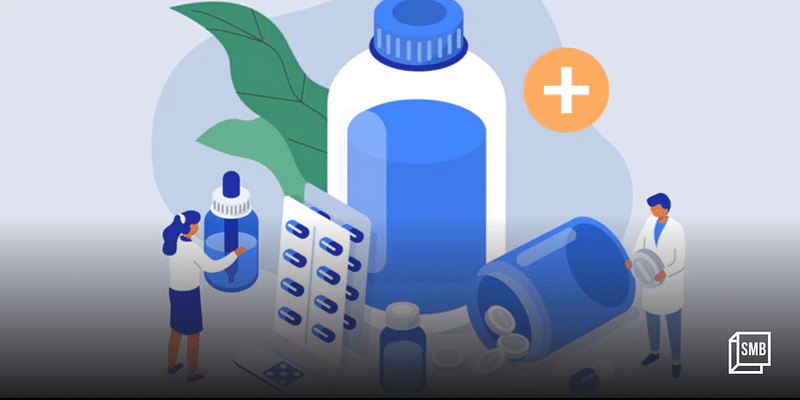
In the past 30 years, human beings have evolved to a fast-paced, yet sedentary lifestyle. Travelling, eating out, sitting at desks for long hours, and breathing more polluted air is the norm. Meanwhile, the average life expectancy across India has increased by 10 years from 60 to 70.
Improved healthcare infrastructure, early diagnosis of lifestyle-related medical conditions, and innovation in pharmaceuticals that treat and manage diseases and conditions are the few reasons behind it.
Researchers globally are developing violent fighters in the form of speciality medication to battle silent killers within our bodies. For example, 25 years ago, an HIV or Hepatitis B diagnosis would have caused the patient to have a much-reduced life with severe symptoms.
Today, such patients lead healthy, symptom-free lives with the same life expectancy as the general population and have relatively smaller chances of spreading the virus. The largest reason behind this seismic change is the development of super-speciality antiretroviral drugs.
In a nutshell, super-speciality medicines treat relatively rare illnesses and complex conditions. The largest categories of super-speciality medicines treat and manage cancer, late-stage chronic kidney disease, auto-immune diseases, post-transplant medication, antivirals, etc.
The use of new-age technology for drug development and delivery are key factor in the continuous improvement of patient outcomes. The developments in pharmaceutical products, using protein kinase inhibitors, biologicals, biologicals, immunoglobulins, etc., manage and treat early to mid-stage cancer, help patients on dialysis lead healthier lives while waiting for a kidney transplant, and manage severe symptoms of rheumatoid arthritis.
The largest opportunity is obvious and also evidence-based: improve patient outcomes.
Monitoring patients using technology, including wearable devices, could drastically improve patient outcomes and therapies. Programmes enabling remote patient monitoring and drug adherence are extremely important in the battle against such illnesses.
.thumbnailWrapper{
width:6.62rem !important;
}
.alsoReadTitleImage{
min-width: 81px !important;
min-height: 81px !important;
}
.alsoReadMainTitleText{
font-size: 14px !important;
line-height: 20px !important;
}
.alsoReadHeadText{
font-size: 24px !important;
line-height: 20px !important;
}
}

In fact, the challenges are larger than the opportunities. Twenty-five years ago, HIV antiretrovirals cost 30X more than today and needed to be imported to India, as pharma MNCs with patents were wary of the Indian government’s commitment towards patent protection. The situation has changed drastically since, but problems for super-speciality medicines like availability, accessibility, affordability, and reliability loom large.
Affordability has two angles—for new age, patented therapies and existing, effective therapies. Almost all patented super speciality therapies are developed by global pharma MNCs, but several therapies have been introduced to India at subsidised rates via the provision of patient assistance programmes.
For example, for the treatment of metastatic non-small cell lung cancer, a large MNC provides two strips free for every strip purchased. The price of the strip of 10 tablets is about Rs 1.5 lakh, with the average dosage at one tablet per day.
Through this patient assistance programme of two free strips, the monthly cost drops from Rs 4.5 lakh to Rs 1.5 lakh, tremendously benefitting Indian patients.
However, several such therapies and drugs available abroad are not brought to India because of the risks associated with the supply chain. Pharma companies spend considerable time and resources to ensure that only genuine patients get the benefit of the free medication and is not used by middlemen to make enormous profits.
Blockchain technology can be a game changer in bridging this trust deficit. Through virtual warehouses and efficient logistics, it is possible to deliver new-age medicines to the right person at the right time without having to distribute the products through traditional channels.
.thumbnailWrapper{
width:6.62rem !important;
}
.alsoReadTitleImage{
min-width: 81px !important;
min-height: 81px !important;
}
.alsoReadMainTitleText{
font-size: 14px !important;
line-height: 20px !important;
}
.alsoReadHeadText{
font-size: 24px !important;
line-height: 20px !important;
}
}

Also, aggregation of supply and demand across the country for off-patent, effective therapies can effectively reduce costs by up to 85%. The inherent benefits of a technology-enabled super speciality supply chain in reducing costs are quite apparent and monumental.
Accessibility and availability challenges arise due to non-data-driven supply chain networks, primarily centred around large healthcare institutions. Super speciality medicines are not available at local medical stores due to high inventory holding costs and relatively low requirements.
As of March 29, 2024, over 50% of medicines required at the Delhi State Cancer Institute are unavailable. One can only imagine the plight of patients and their caregivers, who travelled long distances and made dozens of phone calls to find the right supplier.
And, even if one finds the medicine, payment hassles, delivery coordination, and follow-ups invariably fall upon the caregiver. It is a classic example of where online pharmacies can bridge the gap, making it easier to find the required medication, convenience of doorstep delivery, and flexible payment options.
Lastly, and perhaps most importantly, reliability is key. A sizeable proportion of super speciality medicines are temperature sensitive and require to be stored at 2-8 degrees Celsius. It can become a problem during peak summers with power outages.
Recently, a piece of news brought to life a shocking case of fake cancer drugs sold by a network of hospital chemotherapy mixing staff and rogue elements in society. Patients and caregivers should never buy medicines without a bill with a clear batch number and expiry date, along with the drug license of the seller mentioned on it.
It is always advisable to purchase from reputed pharmacies that purchase from the authorised supply chain network. Further, with blockchain technology, even patients would benefit from genuine medicines.
Devashish Singh is the Co-founder of MrMed.
Edited by Suman Singh
(Disclaimer: The views and opinions expressed in this article are those of the author and do not necessarily reflect the views of YourStory.)










